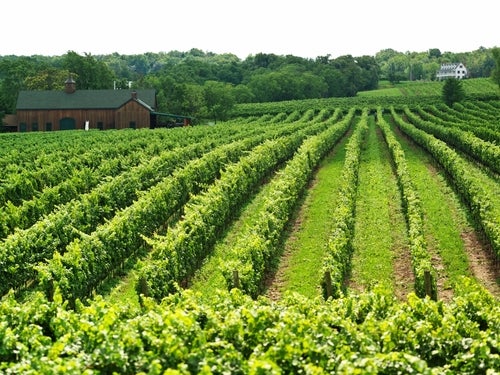![Helicopter in St-Emilion, Bordeaux, France circulating air to protect vineyard from frost – climate change [and] wine](https://worldoffinewine.com/wp-content/uploads/sites/9/2023/01/shutterstock_1958352601.jpg)
Chris Losh speaks to winemakers around the world to get the latest on how climate change is affecting wine production, and to find out how the fast-evolving crisis is likely to shape wine style and quality in the next few decades.
Hard though it is to believe, it’s not that long ago that the topic of climate change and wine was some way down the priority list of most vignerons. Industry conferences held in the early years of the millennium tended to feature a worried scientist or viticultural expert talking to rooms full of growers, importers, and winemakers whose reactions varied from vague concern through disinterest to outright skepticism.
Well, no more. The figures surrounding global heating are incontrovertible. Statistics from NASA and the National Oceanic and Atmospheric Administration show a world that is already more than 1°C (1.8°F) warmer than before the industrial revolution.
More worryingly, the pace of warming is increasing. Eight of the ten warmest years on record have occurred in the last decade. In the last two years, there have been record temperatures from Canada to Sicily, wildfires in Australia, Portugal, Greece, and California, floods in Australia and Germany. But even leaving these extreme events aside, the impact of climate change on wine production is becoming ever-more obvious.
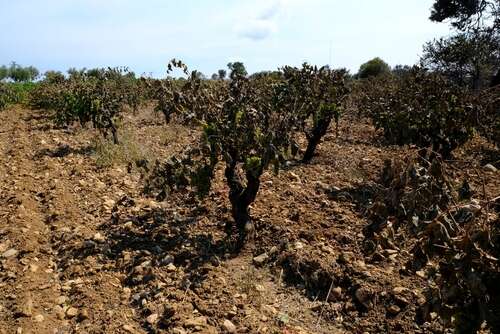
A vineyard burned by wildfires in Afidnes, Greece on August 7, 2021. Photography by Shutterstock.
The effects of climate change on wine quality
Across the board, the standard of wine is generally accepted to be higher now than it was 50 years ago. But that doesn’t mean that climate change is having no impact.
Those improvements are due to technological advances in the winery, and better scientific understanding of how grapes are grown and wine is made. In other words, they have—at least until now—smoothed over or lessened the effects of climate change.
So, while wines might be better now than they were 50 years ago, there’s some debate about whether they are better than they were 20 years ago.
Vines are one of the most weather-sensitive of all agricultural crops. Their ability to reflect vintage variation is, of course, a huge part of wine’s appeal. But that same expressiveness that makes a cool-vintage Bordeaux different from a warm-vintage one also makes wine particularly vulnerable to climate change.
Eminent Australian viticulturalist, Dr Richard Smart, says that even relatively small changes in temperature could “effectively rewrite regional reputations and varietal preferences.”
Since the National Research Council of the National Academies in the US is predicting temperature rises of up to 3°C (5.4°C) by 2050 and 5°C (9°F) by 2100, it’s clear that the wine world could look very different in one or two generations’ time.
In other words, in just 20 years, for wine, climate change has moved from being a theoretical problem to an actual one.
The effects of climate change on wine production
So, how does climate change affect wine production? The most obvious effect is warmer temperatures. And that means that the entire growing cycle is happening earlier. Budding, flowering, fruit-set, veraison, and, of course, harvest are all taking place, on average ten days to two weeks sooner than they used to.
In general, this means that alcohol levels are higher, acidity levels lower and tannins (which ripen later) frequently scratchier and less refined. Hotter growing-season temperatures are making it harder for growers to achieve balance in the fruit—and, therefore, in the finished wine.
But if record summer temperatures are the most obvious example of how climate change has affected viticulture, what happens in winter is perhaps even more serious.
Because winters are significantly milder, vines are often coming out of dormancy far earlier than they used to, making them more vulnerable to frost. France, in particular, has had a pattern of mild winters, followed by sudden cold snaps in early spring, which kill off vulnerable young growth.
“Frost in April isn’t exceptional,” says Thiébault Huber of Domaine Huber Verderau in Meursault. “The problem is summertime in February and March.”
The most severe example was 2021. After an exceptionally mild winter, more than 90 percent of France was hit with sub-zero temperatures for several days in early April. The country’s total wine harvest was the lowest since the Second World War, 30 percent smaller than usual—ruinous for hundreds of growers. The Loire has been particularly badly affected over the last two decades.
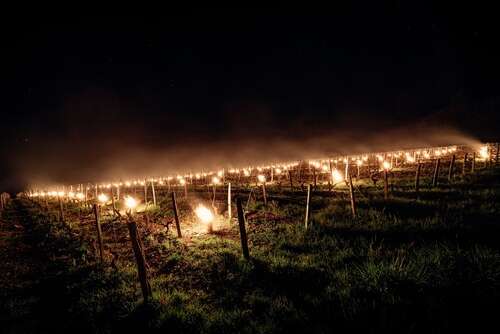
But the story of climate change and wine is not just one of elevated temperatures; it is creating more extreme weather generally.
Wildfires, for instance, are obviously devastating to vineyards, people, and property. But the rolling clouds of smoke can cover vineyards and ruin wines produced from vines that were never in physical danger from the flames. Australia, South Africa, and the US have all seen wines affected by smoke taint over the last ten years.
Shortage of water is another obvious issue, particularly in the New World where irrigation is essential. South Africa and Australia have both suffered from prolonged periods of well below-average rainfall over the last 15 years. Climatologists in the US, meanwhile, estimate that nearly 80 percent of the country is in some level of drought.
Wine is a thirsty industry. To irrigate a 10ha (24-acre) vineyard for three hours takes tens of thousands of liters of water. If the water isn’t there—which it might not be in 30 years’ time if the current situation continues or worsens— that creates an existential problem.
One of the vagaries of climate change is that when there is rain, it is often the wrong sort of rain. Rather than being a steady accumulation of moisture over the winter that replenishes soils and aquifers, it is increasingly falling in intense, short bursts in the summer.
Somewhat ironically, these flash floods do nothing to alleviate drought, since the water simply runs off.
“Years ago, there was a season for things,” sighs Derek Mossman Knapp, who dry farms old vines in Chile’s Maule Valley. “Now it seems more arbitrary.”
The final problem is hail. In Europe, especially, it seems to be becoming far more common, and it can be immensely destructive.
“If you are the victim of a hailstorm,” says Sheila Ulldemolins of Herencia Altés in Terra Alta in Catalonia, “you can say goodbye to your harvest.”
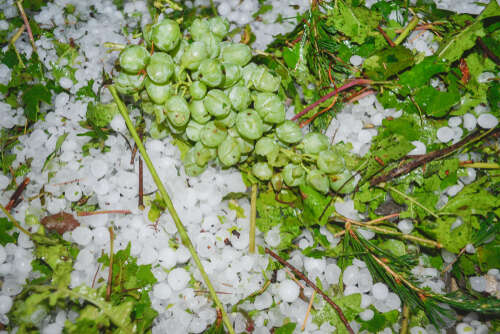
Which wine regions have been most affected by climate change?
Wine regions have not all been impacted equally by climate change. Some, such as Margaret River in Australia and Central Otago in New Zealand report few issues. Others are beset by problems on an almost annual basis.
Even within the same country, the effects can vary.
South African viticultural guru, Rosa Kruger, paints a picture where the Western Cape seems to be getting hotter and drier, the east is getting more rain and the south has less rain overall, but more in summer.
In general terms, however, Europe—particularly the cooler areas of Europe—seem to be seeing the biggest changes.
Some of these, it must be said, can, in strictly viticultural terms, be construed as positive. The obvious example is the UK, which used to be exceptionally marginal, but which has seen the quality and reliability of its wines increase hugely. Some are predicting that Sweden might one day have thousands of acres under vine.
German viticulture, meanwhile, now stretches as far north as Kiel.
In the Mosel, Ernie Loosen recalls that his father used to expect four bad vintages in ten. By contrast, Ernie reckons his last poor year was in 1984. “If anyone has gained from global warming,” he says mischievously, “it’s us.”
That said, Germany’s winemakers now have the opposite problem. Where the country’s viticulture used to be centered on maximising ripeness with minimum sunshine, now it is the opposite—about retaining acidity and lowering sugar levels.
Many of Germany’s A-list vineyards are on places designed to maximize sun-exposure – steep south-facing slopes next to sunshine-reflecting rivers. If temperatures continue to climb, the nature of Riesling could change beyond recognition.
Riesling, of course, is an unusually faithful reflector of climate and terroir. Its red equivalent is Pinot Noir, and in the variety’s spiritual home, Burgundy, growers are, to put it bluntly, being battered by climate change.
One winemaker told me he has experienced “frosts in April (2012, 2016, 2021), more severe hail storms (2012, 2013, 2014), and heat waves and droughts resulting in concentration (2019, 2020). Volumes are way down, and the famed ‘typicité’ difficult to attain, with terroir’s finer nuances often smothered in atypically ripe fruit.“
How is the wine industry reacting to climate change?
Climate change might be having a noticeable impact on the wine industry already—but there are tools at its disposal.
In short, it can change what it grows, where it grows it, and how it manages the crop.
At its most extreme, “what it grows” can mean a complete change of grape variety. Bordeaux sanctioned the use of six new varieties in its vineyards two years ago. Among them was Touriga Nacional, star of Port production in the Douro.
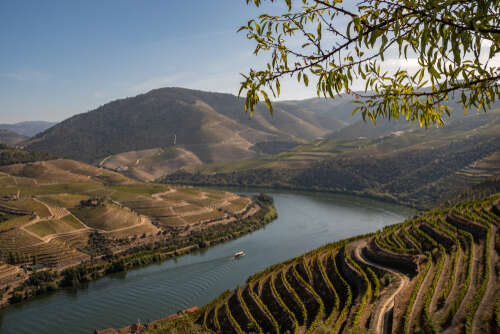
Currently, these new additions are limited to no more than 10 percent of the total blend, but if they prove to be better-suited to the new climatic reality this could change.
In the New World, particularly Australia, a growing number of producers are looking at Mediterranean varieties such as Nero d’Avola, Tempranillo, and Fiano. This could form a blueprint for elsewhere. Varieties that better withstand heat and drought and are naturally higher in acid could lead to a shift away from the French varieties that have dominated places like Australia, South Africa, and The Americas and towards Spanish, Italian, Greek, and Portuguese alternatives.
Maybe (whisper it) even in France. For while it might sound sacrilegious, all wine regions will be having these conversations in the near future. “The fact that in Bordeaux they recently legalised Touriga Nacional due to its drought resistance but that in the Douro we’re being forced to look beyond Touriga Nacional as it is even drier is telling,” says Anthony Symington of Port shippers Symington Family Estates.
Adopting new varieties will be easier in regions that are already making multi-varietal blends. Currently, any suggestion of switching from Pinot Noir in Burgundy makes its own contribution to global warming in the form of the red-hot fury of growers enraged at the prospect.
Beyond grape varieties, growers can sometimes “create coolness” by planting on differently oriented slopes that get less or “cooler” sun/more wind, or at higher altitudes.
This could have a big impact on centuries-old vineyard classifications, as once-unfancied (or unplanted) areas become sought-after, and once great sites are deemed too warm.
Some growers believe they can mitigate the effects of climate change by using different clones of their existing varieties—versions that ripen later or more reluctantly. In the short term, at least, there is something this may yield some positive results. Whether it will be enough should temperatures increase by 3°C is another matter entirely.
Twenty years ago, growers left bunches in the sun to help them attain ripeness. Increasingly, they are shading them with leaves to keep them cool. If all else fails, and crops come in super-ripe, there is always (for some regions at least) the nuclear option of de-alcoholizing the wine by a few degrees.
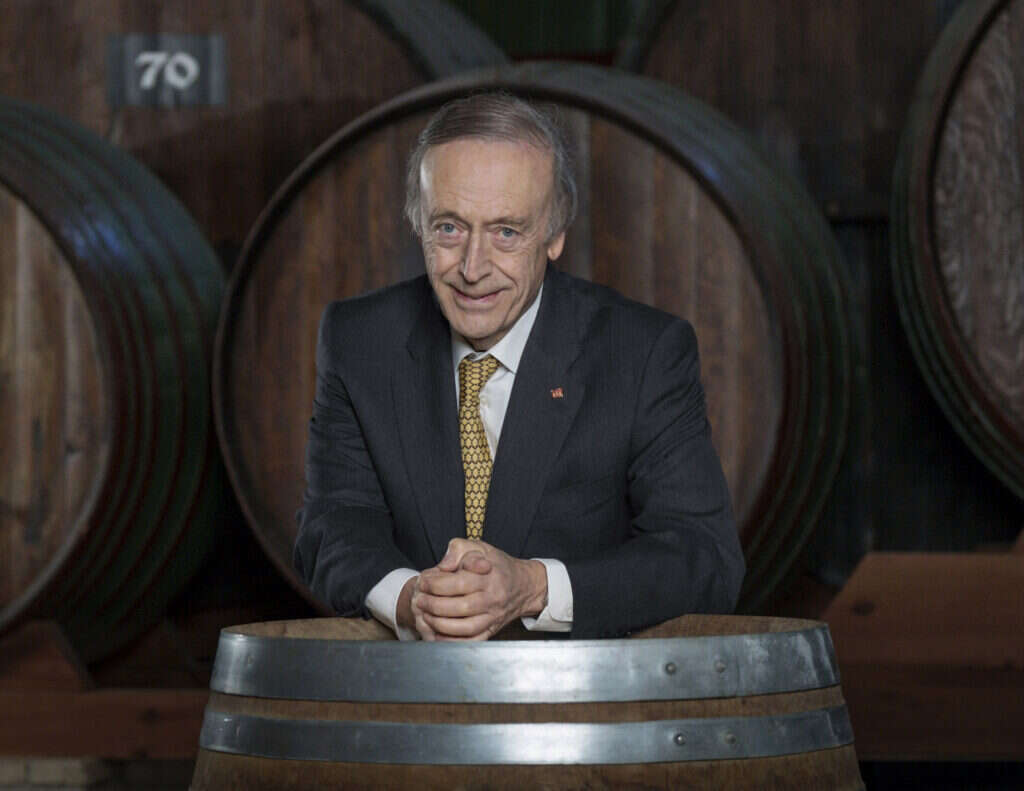
At the moment, wine producers all round the world are having important and sometimes-difficult conversations about how best to prepare themselves for a future that looks like being radically different to their past. Centuries of experience are no advantage when the rules of the game have changed. Indeed, the ability to take tough decisions and move fast could be more beneficial than the pressure created by a glorious past.
Spanish wine grandee, Miguel Torres, describes wine as the “canary in the coal mine.” And while that canary might not—yet—be reduced to silence, it is not singing as sweetly as it once did.
There are ways that wine is adapting and can adapt to climate change. But none of them are easy, and many of them will take time. And if the scientists are right, that is one thing that the wine industry does not have.



